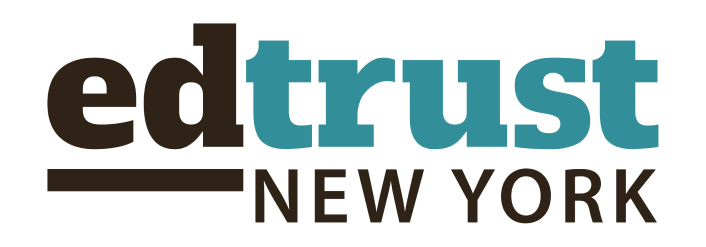Findings underscore the need for greater public transparency to drive resources, supports, and services to the schools and students who need them most
NEW YORK – A new analysis released today by EdTrust-New York found that New York City’s district-run schools failed to engage nearly 1 in 4 students during the first two days of the school year, with significant disparities for Black and Latinx students, English learners, students with disabilities, and students experiencing homelessness – the same groups of students who were underserved when the pandemic forced schools to close in the spring.
The analysis, Early Warnings in New York City, was based on limited data on student attendance from September 16-17 that was made public after the City Council subpoenaed the New York City Department of Education (NYCDOE).
While incomplete, the data provide a narrow but important glimpse at one of the most critical challenges facing our education system: ensuring that all students receive quality instruction each day whether they are learning remotely, in person, or a blend of the two.
Among the findings for school attendance during September 16-17, which NYCDOE called “an orientation period where all students learned remotely”:
- Overall, NYCDOE schools that reported attendance data marked an average of 23% of students absent. Last year, the same schools reported an average 10% absentee rate during the first two days of the school year.
- Absenteeism varied across the five boroughs, with schools in Staten Island and Manhattan marking 17% of students absent compared to 28% of schools in the Bronx. Schools in Brooklyn marked 24% of students absent and schools in Queens marked 22% of students absent.
- NYCDOE had wide disparities in school attendance by race and ethnicity, with schools marking 29% of Black students, 26% of Latinx students, 18% of Asian students, and 16% of White students absent.
- At the elementary and middle school levels, schools failed to engage with an average of 20% of students, and schools marked Black and Latinx students absent at more than 1.8 times the rate of White students. During that period, elementary and middle schools marked 26% of Black students, 23% of Latinx students, 16% of Asian students, and 13% of White students absent.
- At the high school level, schools failed to engage with an average of 28% of students, and schools marked Black and Latinx students absent at 1.4 times the rate of White students. During that period, schools marked 32% of Black and Latinx students, 23% of White students, and 21% of Asian students absent.
- Schools marked students experiencing homelessness absent at a far higher rate (34%) than their peers living in secure housing (22%).
- Schools marked English learners absent at a far higher rate (34%) than their peers who are not English learners (21%).
- Schools marked 28% of students with disabilities absent, compared to 22% of general education students.
“The limited attendance data that the City has released highlights the need for our education system to do things differently this fall to specifically address the needs of underserved students,” said Ian Rosenblum, executive director of EdTrust-New York. “The data — and the City Council’s difficulty obtaining it — also underscore the need for greater public transparency. The ability of policymakers, educators, parents, and other stakeholders to identify and narrow the opportunity gaps in our education system is limited by the lack of public statewide data on critical issues like student attendance, the availability of personal learning devices and high-speed internet access, and the amount of live instruction for students who rely on remote learning.”
Read the analysis, see complete data notes, and explore other resources at EdTrustNY.org/ReopeningStronger.
